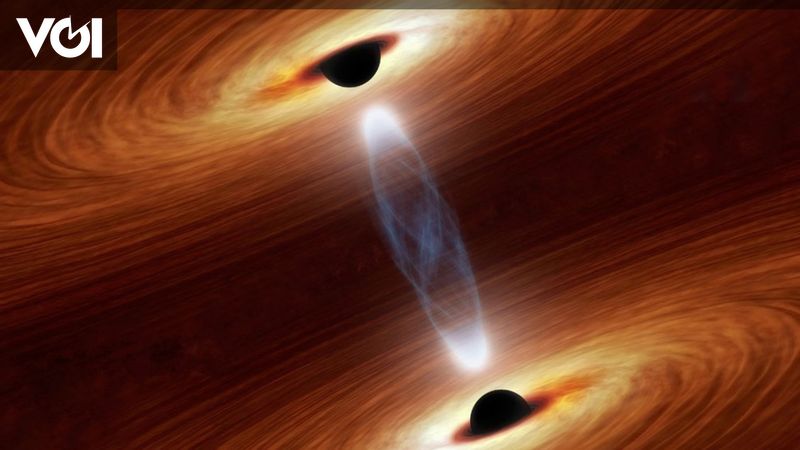JAKARTA – In the distance, at a distance of 9 billion light from Earth. Two supermassive Blackholes are reportedly moving around each other. Scientists call the activity of the two black holes an “epic cosmic dance 9 billion light-years away.” On the other hand, they also believe that the dance is destined to end dramatically.
Reported from Sputnik Newsscientists predict in the next 10,000 years, “space and time” may be shaken by the inevitable collision of two supermassive black holes locked together in the gravity of space, according to a study by scientists from the California Institute of Technology, also known as Caltech.
The masses of the two black holes are hundreds of millions of times greater than our Sun, and the distance between them is currently estimated to be about 50 times the distance between our Sun and Pluto.
“When this pair merges in about 10,000 years, the titanic collision is expected to shake space and time itself, sending gravitational waves throughout the universe,” the scientist said, explaining the findings.
The two black holes examined by the Caltech-led team are believed to be the most dense supermassive black hole duo ever observed. The pair is nicknamed MCC 2131-021, and it is a quasar.
The fact that a quasar – something known as an active galactic nucleus with supermassive black hole sucking material from the disk that surrounds it – contains two black holes orbiting within it has piqued the curiosity of scientific groups. The possibility of a quasar having two black holes has been thought by astronomers, but it is difficult to find evidence for it.
Prior to MCC 2131-021, only one quasar has been shown to have a pair of supermassive black holes “caught merging”, as the two bodies orbit each other in a “cosmic dance”. The pair was detected in a quasar dubbed OJ 287, with its black hole rotating every nine years, while it took two years to complete an orbit for the duo seen at PKS 2131-02.
A new pair of supermassive black holes were detected as scientists noticed periodic changes in the brightness of the quasar’s radio light. According to the scientists, citing radio data, they registered a perfectly sinusoidal light curve – something that had never been observed in a quasar before.
“When we realized that the peaks and troughs of the light curve detected from recent times matched the peaks and troughs observed between 1975 and 1983, we knew something very special was going on,” said Sandra O’Neill, lead author of the study and an undergraduate student at Caltech.
The scientists think that this new study provides an avenue for further detecting merging of similar supermassive black holes. The merging of these two black holes is considered to be able to cause large ripples in space and time.
–


